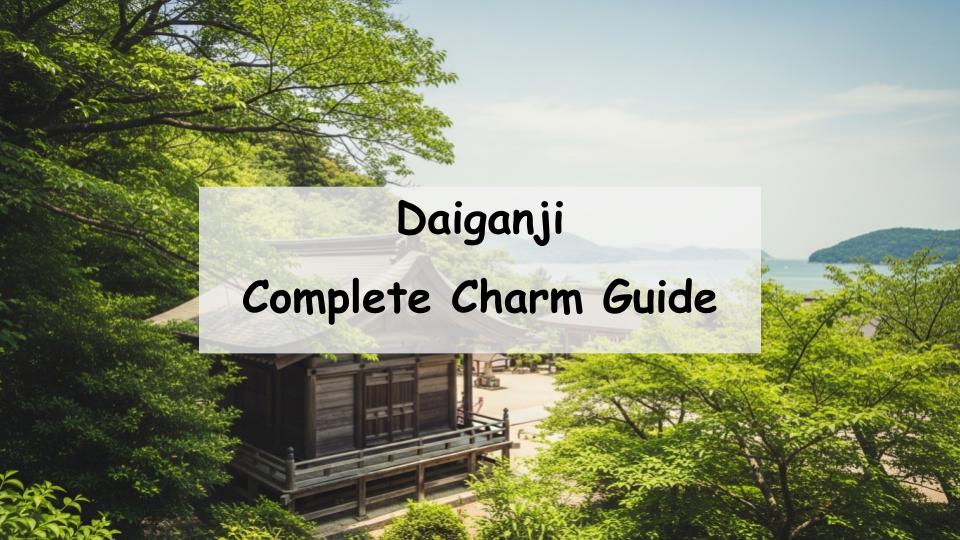Many people are eager to learn more about Daiganji Temple. Questions about its history, unique features, key attractions, as well as access and visiting tips, are common. This article thoroughly introduces the charm of Daiganji Temple, explaining its historical background, must-see spots, and practical access information. By reading this, you will deepen your understanding of Daiganji Temple and be able to plan your visit smoothly.
History and Background of Daiganji Temple
The Founding and Development of Daiganji Temple
Daiganji Temple, located near the famous Itsukushima Shrine in Hiroshima Prefecture, has a long and rich history. It was founded centuries ago and has grown to be a spiritual center for the local community. Over time, through various restorations and expansions during the Sengoku and Edo periods, the temple has preserved its legacy. The temple maintains a close historical relationship with Itsukushima Shrine, playing an important role in cultural exchange.
The Cultural Significance of Daiganji Temple
Daiganji Temple is more than just a religious site; it holds many valuable cultural assets. It preserves traditional architecture, Buddhist art, and historical documents, making it a symbol of the region’s cultural heritage. Alongside Itsukushima Shrine, it is recognized as part of a UNESCO World Heritage Site, which reflects its importance both domestically and internationally.
Features and Highlights of Daiganji Temple
Architectural Style and Characteristics
The temple’s architecture showcases traditional Japanese craftsmanship, emphasizing the natural beauty of wood. The curved rooflines and carved pillars demonstrate the skill of artisans from bygone eras, offering visitors a glimpse into the historical depth and aesthetic value of the temple.
Main Attractions Within the Temple Grounds
Highlights of the Main Hall
The Main Hall is the central structure of Daiganji Temple, exuding a solemn and majestic atmosphere. Inside, you can find precious Buddhist statues and ritual implements, creating a peaceful space for contemplation. The intricate details of the decorations also reflect the temple’s high historical value.
Gardens and Surrounding Natural Environment
The temple’s gardens are designed to showcase the beauty of nature throughout the seasons. Cherry blossoms in spring and vibrant autumn leaves draw many visitors. The surrounding area features sea views and mountain landscapes, providing a serene environment for walking and relaxation.
Seasonal Events and Festivals
Daiganji Temple hosts various events throughout the year. Joint festivals with Itsukushima Shrine and traditional seasonal ceremonies attract many worshippers and offer a unique opportunity to experience local culture firsthand.
Access and Visitor Information for Daiganji Temple
Nearest Stations and Bus Routes
To reach Daiganji Temple, visitors usually take a ferry from JR Miyajimaguchi Station to Itsukushima Island, followed by a short walk. It is also easily accessible from Hiroshima city center by bus or train. It is advisable to check transportation schedules in advance, especially during peak seasons.
Access by Car and Parking Information
If traveling by car, parking is available near Miyajimaguchi. From there, visitors take the ferry to the island. Because vehicle access on Itsukushima Island is limited, public transportation and walking are recommended for convenience.
Tips for Visiting and Recommended Times
Visiting early in the morning or late afternoon is ideal to avoid crowds and enjoy a tranquil experience. Special events can bring many visitors, so confirming event dates ahead of time is important. Visitors are also expected to maintain a respectful and quiet demeanor within the temple grounds.
Nearby Tourist Attractions
Recommended Temples and Shrines Nearby
Around Daiganji Temple, there are many historic temples and shrines to explore, including the iconic Itsukushima Shrine with its striking vermilion buildings. Touring these sites offers deeper insight into the area’s history and culture.
Dining and Resting Spots
During your visit, you can enjoy local cuisine and sweets at cafes and restaurants on Miyajima Island. Fresh seafood and traditional Japanese dishes are highlights, and peaceful rest areas allow for a comfortable break during sightseeing.
Conclusion: Tips for Visiting Daiganji Temple
Things to Know Before Your Visit
Check opening hours and event schedules before your trip to Daiganji Temple and Itsukushima Shrine. Wear comfortable, respectful clothing suitable for walking and religious settings. Observing temple etiquette and keeping noise levels low are essential.
Suggestions for Enjoying Your Visit
Begin your visit by paying respects in the Main Hall, then take time to stroll through the gardens and enjoy the natural surroundings. If possible, extend your visit to Itsukushima Shrine and other nearby sites to fully immerse yourself in the rich history and culture of the area.





Comment